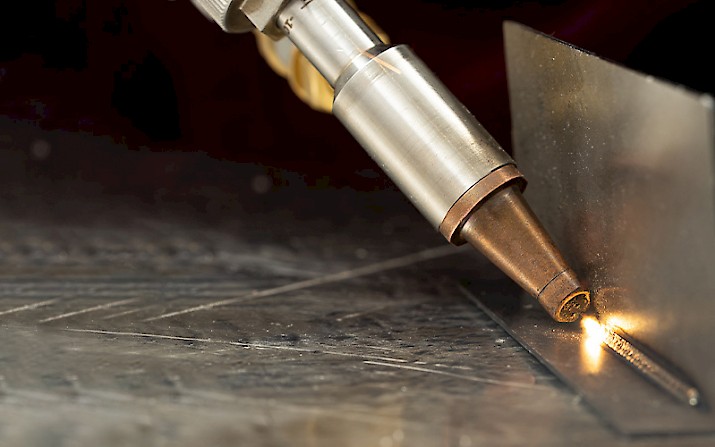Welding WPS for Beginners: Beginning with Welding Procedure Specs
Welding WPS for Beginners: Beginning with Welding Procedure Specs
Blog Article
The Ultimate Overview to Welding WPS Procedures: A Detailed Review for Welders
In the elaborate world of welding, Welding Treatment Specifications (WPS) offer as the backbone of guaranteeing high quality, consistency, and safety and security in welding procedures (welding WPS). As we delve right into the different parts of a WPS and discover the details of qualification and qualification, we will certainly discover the vital function these treatments play in the realm of welding.
Value of WPS Procedures
Recognizing the importance of Welding Treatment Requirements (WPS) procedures is important for ensuring the high quality and stability of bonded structures. WPS procedures act as a roadmap for welders, outlining the required steps, criteria, and products required to achieve a sound weld. By sticking to WPS standards, welders can make sure uniformity in their job, causing reliable and structurally sound welds.
Among the main reasons why WPS procedures are important is their role in maintaining weld quality and stability. Complying with the specified welding parameters and strategies detailed in the WPS assists stop defects such as porosity, fracturing, or incomplete blend, which can compromise the toughness and longevity of the weld. Additionally, WPS treatments are vital for making sure conformity with market criteria and codes. By complying with recognized WPS standards, welders can demonstrate that their job satisfies the essential requirements for safety and top quality, supplying assurance to customers, assessors, and governing bodies. Essentially, the relevance of WPS treatments can not be overstated, as they are fundamental to accomplishing regular, top quality welds that meet market criteria and specifications.

Components of a WPS
A Welding Procedure Specification (WPS) normally consists of essential components that detail the certain needs for carrying out a weld, guaranteeing uniformity and high quality in the welding procedure. The essential elements of a WPS consist of important variables such as base metals, filler steels, preheat and interpass temperatures, welding procedures, shielding gases, welding settings, and post-weld warmth treatment demands.
Base steels refer to the materials being signed up with, while filler steels are used to load the space in between the base steels during welding. Preheat and interpass temperature levels are crucial for regulating the warmth input and avoiding problems like cracking or distortion. The welding procedure outlines the certain technique to be made use of, whether it's gas metal arc welding (GMAW), shielded metal arc welding (SMAW), or another method. Securing gases protect the weld pool from atmospheric contamination. Welding positions define the orientations in which welding can be performed. Post-weld heat therapy may be required to alleviate stress and anxieties and improve the weld's residential properties. A comprehensive understanding of these parts is crucial for creating a comprehensive and effective WPS.

Qualification and Certification
Having developed the vital elements of a Welding Treatment Spec (WPS), the emphasis currently moves in the direction of the essential facets of credentials and certification in welding methods.

Qualification, on the other hand, is the official acknowledgment of a welder's qualifications by a pertinent certification body or company. Welding certifications are typically based upon the particular welding procedures, products, and settings a welder is certified to deal with. Holding a valid welding certification demonstrates that a welder satisfies market criteria and is qualified to execute welding tasks to the called for specifications.
Producing a WPS
To develop a Welding Procedure Requirements (WPS) that satisfies market requirements, cautious factor to consider of welding processes, materials, and operational specifications is crucial. The first step in creating a WPS is to recognize the welding procedure to be made use of, such as gas metal arc welding you could look here (GMAW) or shielded steel arc welding (SMAW)
Applying and Checking WPS
Upon wrapping up the comprehensive Welding Procedure Requirements (WPS) that thoroughly details welding processes, materials, operational criteria, and quality control measures, the focus shifts to efficiently applying and checking the recognized treatments. Application entails making certain that all welders involved in the project know with the WPS and follow it diligently throughout the welding process. This requires offering appropriate training and guidance to assure adherence to the specified treatments. Keeping an eye on the WPS includes continual oversight to confirm that welding activities straighten with the recorded specifications. Inspections, testing, and top quality control procedures are crucial elements of the tracking procedure to identify any type of problems or deviations immediately. Routine audits and testimonials of the welding treatments assist in preserving consistency and top read what he said quality throughout the project. Efficient implementation and surveillance of the WPS are essential for making certain the integrity, stamina, and security of the welded joints, eventually adding to the overall success of the welding project.
Final Thought
To conclude, understanding and adhering to Welding Procedure Specifications (WPS) is vital for welders to make sure quality, consistency, and safety in their job. By recognizing the components of a WPS, getting correct certifications and accreditations, developing thorough procedures, and carrying out and monitoring them effectively, welders can improve their abilities and proficiency in welding techniques. Complying with WPS treatments is crucial for creating premium welds and conference market standards.
In the intricate world of welding, Welding Procedure Specs (WPS) serve as the backbone of guaranteeing quality, uniformity, and safety in welding operations. The welding process lays out the certain technique to be utilized, whether it's gas steel arc welding (GMAW), shielded steel arc welding (SMAW), or another method.To create a Welding Procedure Spec (WPS) that fulfills market criteria, mindful factor to consider of welding procedures, products, and functional specifications is necessary. The first step in developing a WPS is to identify the welding procedure to be utilized, such as gas metal arc welding (GMAW) or protected metal arc welding (SMAW)Upon wrapping up the comprehensive Welding Procedure Spec (WPS) that thoroughly details welding procedures, materials, operational criteria, and quality guarantee actions, the emphasis moves to properly carrying out and monitoring the established treatments.
Report this page